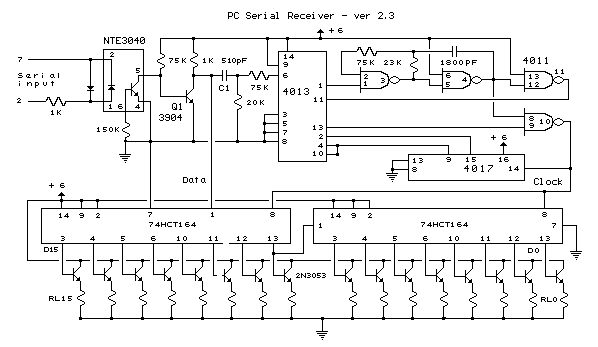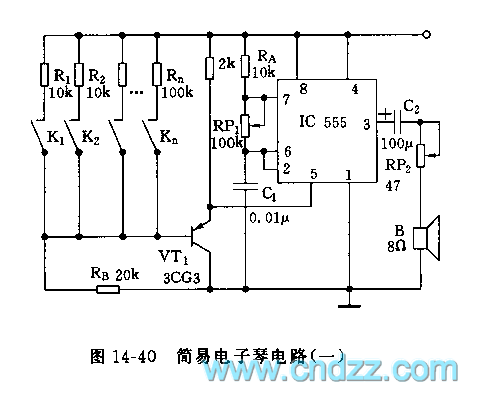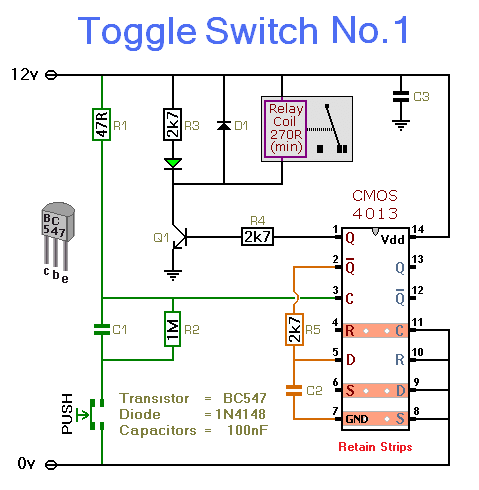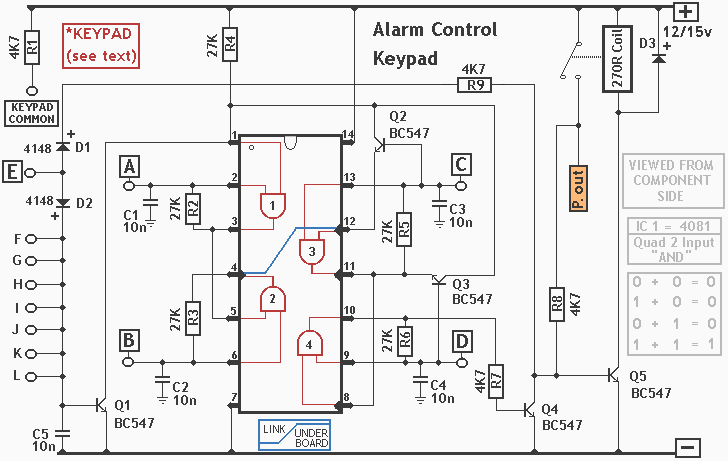
Electronic Music Maker
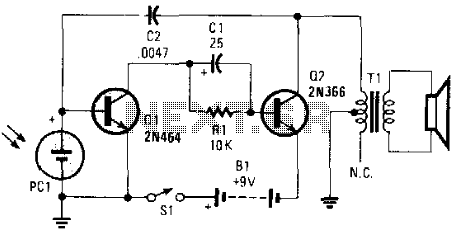
This electronic music maker utilizes an astable oscillator circuit that is regulated by a photocell. The intensity of light falling on the photocell influences the tone. By enclosing the circuit within a box, it is possible to manipulate the light-sensing photocell with one’s hand.
The electronic music maker operates on the principle of an astable multivibrator configuration, which generates a continuous square wave output. The frequency of this output is determined by the resistive and capacitive components connected to the circuit, as well as the resistance of the photocell, which varies with light intensity.
In this design, the photocell (light-dependent resistor, LDR) serves as a variable resistor that changes its resistance based on the amount of ambient light it receives. When light falls on the photocell, its resistance decreases, allowing more current to flow through the circuit. This change in current alters the timing components of the astable oscillator, effectively modifying the frequency of the output tone.
The schematic typically includes a power supply, which may be a battery or a DC power source, connected to the astable oscillator circuit. The circuit consists of two resistors, a capacitor, and the photocell. The output from the oscillator can be connected to a speaker or a piezo buzzer to produce sound.
Enclosing the circuit in a box allows for portability and ease of use, while also providing a way to shield the components from external light sources and interference. The design can be enhanced by incorporating additional features such as a potentiometer for manual control of the frequency, or an LED indicator that responds to the output tone.
This electronic music maker is not only an engaging project for hobbyists but also serves as an educational tool to demonstrate the principles of light sensing and sound generation through electronic circuits. This electronic music maker uses an astable oscillator circuit that is controlled by a photocell. The light falling on the photo cell controls the tone. By mounting the circuit in a box, you can control light-reading PCI with your hand.
The electronic music maker operates on the principle of an astable multivibrator configuration, which generates a continuous square wave output. The frequency of this output is determined by the resistive and capacitive components connected to the circuit, as well as the resistance of the photocell, which varies with light intensity.
In this design, the photocell (light-dependent resistor, LDR) serves as a variable resistor that changes its resistance based on the amount of ambient light it receives. When light falls on the photocell, its resistance decreases, allowing more current to flow through the circuit. This change in current alters the timing components of the astable oscillator, effectively modifying the frequency of the output tone.
The schematic typically includes a power supply, which may be a battery or a DC power source, connected to the astable oscillator circuit. The circuit consists of two resistors, a capacitor, and the photocell. The output from the oscillator can be connected to a speaker or a piezo buzzer to produce sound.
Enclosing the circuit in a box allows for portability and ease of use, while also providing a way to shield the components from external light sources and interference. The design can be enhanced by incorporating additional features such as a potentiometer for manual control of the frequency, or an LED indicator that responds to the output tone.
This electronic music maker is not only an engaging project for hobbyists but also serves as an educational tool to demonstrate the principles of light sensing and sound generation through electronic circuits. This electronic music maker uses an astable oscillator circuit that is controlled by a photocell. The light falling on the photo cell controls the tone. By mounting the circuit in a box, you can control light-reading PCI with your hand.
